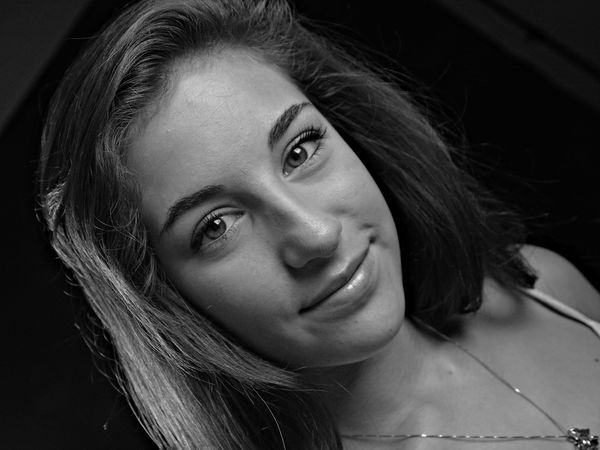Monthly Masters’ Critique - June 2020 - Mathew Brady’s Portrait of Ulysses Grant
Jun 1, 2020 10:46:37 #
Introduction
This month we will consider an historic photograph by Mathew Brady, one of the earliest photographers in America. Brady studied under inventor Samuel Morse, who pioneered the daguerreotype technique. Brady opened his studio in 1844 and photographed presidents and other well-known Americans there but he is most famous for his work during the Civil War, using a mobile studio and darkroom, employing and training numerous assistants who became the first cadre of wartime photographic journalists.
This portrait of General Ulysses Grant at the forward command center in City Point, VA in 1864 is considered Brady’s masterpiece. It was a hasty capture but would stand as one of the images essential to reshaping our national identity after the war. It was also the first important casual portrait of an important personage. The traditional method of photographic portraiture was studio based, carefully staged with impeccable grooming and dress, using poses designed to create an idealized image. With the Grant image, Brady created the genre of casual photographic portraiture.
As you study this image, here are some questions to spur your thinking. Consider any of them you wish, review any of the linked resource information, and share your own impressions of this portrait.
Questions for Consideration:
1. What is your overall opinion of this image? The composition? The pose? The use of light? Is this an image you would want in your own historic collection? Why or why not?
2. I’ve included both the finished image and the original plate. Would you have cropped differently? Posed differently? If different, what would you have chosen to do?
3. What does the image tell us about the subject? What do you make of Grant’s mood? Personality? How is this image different from the usual formal portraits we see of military and political figures of the late 1800s? In what ways does this portrait seem “modern”?
4. This is considered the first casual portrait, and a foreshadowing of well known casual portraits of famous figures like Roosevelt, Churchill, Kennedy in later years. There have even been suggestions that this image was the gateway to “decisive moment” street photography like Cartier-Bresson’s. What are your thoughts? Briefly discuss.
5. Do you prefer casual style portraits that include environment, or more formal portraits which isolate/focus on the subject? In your own photographic work, do you prefer to make informal portraits or studio type portraits where you control the variables? Explain. And if you would, share one of your own portraits that illustrate your preference.
Links For Further Study
https://www.leninimports.com/mathew_brady_1.html
https://www.salon.com/2002/04/22/brady_grant/
https://opinionator.blogs.nytimes.com/2011/07/25/the-all-seeing-eye/?ref=opinion
https://en.wikipedia.org/wiki/Mathew_Brady
http://civilwarsaga.com/civil-war-photography/
https://www.salon.com/2002/04/22/brady_grant/
https://medium.com/photographs-words/objective-subjectivity-mathew-brady-u-s-grant-6ae083c40d84
https://www.battlefields.org/learn/biographies/mathew-brady
https://www.smithsonianmag.com/videos/category/history/mathew-bradys-vision/
https://mymodernmet.com/mathew-brady-civil-war-photos/
BONUS LINK if you got this far: the first photographic composite of a portrait against a different background with added compositional elements! https://www.npr.org/sections/npr-history-dept/2015/10/27/452089384/a-very-weird-photo-of-ulysses-s-grant
This month we will consider an historic photograph by Mathew Brady, one of the earliest photographers in America. Brady studied under inventor Samuel Morse, who pioneered the daguerreotype technique. Brady opened his studio in 1844 and photographed presidents and other well-known Americans there but he is most famous for his work during the Civil War, using a mobile studio and darkroom, employing and training numerous assistants who became the first cadre of wartime photographic journalists.
This portrait of General Ulysses Grant at the forward command center in City Point, VA in 1864 is considered Brady’s masterpiece. It was a hasty capture but would stand as one of the images essential to reshaping our national identity after the war. It was also the first important casual portrait of an important personage. The traditional method of photographic portraiture was studio based, carefully staged with impeccable grooming and dress, using poses designed to create an idealized image. With the Grant image, Brady created the genre of casual photographic portraiture.
As you study this image, here are some questions to spur your thinking. Consider any of them you wish, review any of the linked resource information, and share your own impressions of this portrait.
Questions for Consideration:
1. What is your overall opinion of this image? The composition? The pose? The use of light? Is this an image you would want in your own historic collection? Why or why not?
2. I’ve included both the finished image and the original plate. Would you have cropped differently? Posed differently? If different, what would you have chosen to do?
3. What does the image tell us about the subject? What do you make of Grant’s mood? Personality? How is this image different from the usual formal portraits we see of military and political figures of the late 1800s? In what ways does this portrait seem “modern”?
4. This is considered the first casual portrait, and a foreshadowing of well known casual portraits of famous figures like Roosevelt, Churchill, Kennedy in later years. There have even been suggestions that this image was the gateway to “decisive moment” street photography like Cartier-Bresson’s. What are your thoughts? Briefly discuss.
5. Do you prefer casual style portraits that include environment, or more formal portraits which isolate/focus on the subject? In your own photographic work, do you prefer to make informal portraits or studio type portraits where you control the variables? Explain. And if you would, share one of your own portraits that illustrate your preference.
Links For Further Study
https://www.leninimports.com/mathew_brady_1.html
https://www.salon.com/2002/04/22/brady_grant/
https://opinionator.blogs.nytimes.com/2011/07/25/the-all-seeing-eye/?ref=opinion
https://en.wikipedia.org/wiki/Mathew_Brady
http://civilwarsaga.com/civil-war-photography/
https://www.salon.com/2002/04/22/brady_grant/
https://medium.com/photographs-words/objective-subjectivity-mathew-brady-u-s-grant-6ae083c40d84
https://www.battlefields.org/learn/biographies/mathew-brady
https://www.smithsonianmag.com/videos/category/history/mathew-bradys-vision/
https://mymodernmet.com/mathew-brady-civil-war-photos/
BONUS LINK if you got this far: the first photographic composite of a portrait against a different background with added compositional elements! https://www.npr.org/sections/npr-history-dept/2015/10/27/452089384/a-very-weird-photo-of-ulysses-s-grant
Fair use https://commons.wikimedia.org/wiki/File:Mathew_B._Brady_-_Ulysses_S._Grant_-_Google_Art_Project.jpg
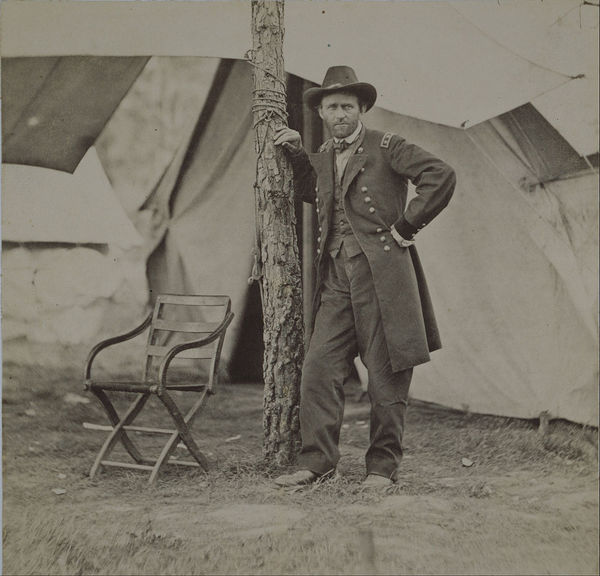
(Download)
Fair use https://www.flickr.com/photos/usnationalarchives/3995287533
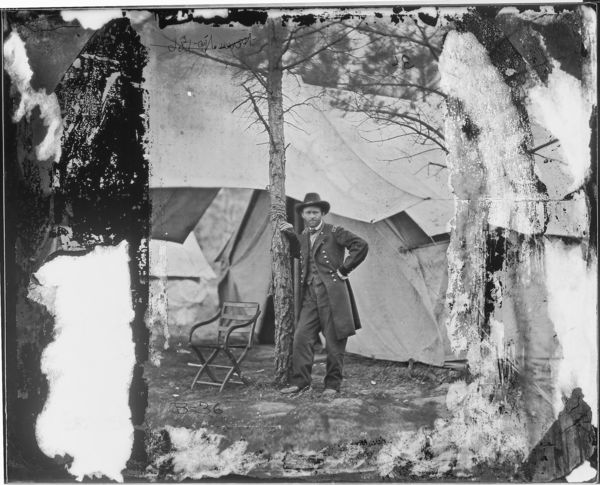
(Download)
Jun 1, 2020 12:50:16 #
Grant was such a humble man, and such an unlikely candidate for fame. In later years he was asked if he had any regrets. He said that his one regret was that he had never been able to adequately repay the American people for everything they had given him. He said that every time he tried to make a sacrifice for the good of the country, he received more honors and was therefore yet more in debt to the American people.
I have always loved this photograph. It so well portrays the strong, yet simple, humble man that Grant was.
Photographs of people too often fall into one of two categories: 1) poor people, especially non-Europeans, that can seem voyeuristic and exploitative; 2) formal portraits of the rich and powerful, the aristocracy, which in my opinion is the prototype for much modern portraiture.
This photo is neither. It is a capture of a real life moment that is neither a story of a downtrodden working class person - though Grant was throughout much of his life - nor a story of the high and the mighty - though Grant's achievements were spectacular. At the time this photo was taken Grant was a four star general, in command of an immense army, yet look at the simple uniform - no gold braids, no sword, not epaulets, no plumes. Grant was all business and no nonsense.
He was famous for his composure while under great stress in the middle of battles, and the expression in his face in this photo captures that, I think.
Here he is, an officer in the field with the simplest marks of rank, just quietly getting the job done while performing his duty in the service of his country. It is a wonderful image. Thanks, Minnie.
Mike
I have always loved this photograph. It so well portrays the strong, yet simple, humble man that Grant was.
Photographs of people too often fall into one of two categories: 1) poor people, especially non-Europeans, that can seem voyeuristic and exploitative; 2) formal portraits of the rich and powerful, the aristocracy, which in my opinion is the prototype for much modern portraiture.
This photo is neither. It is a capture of a real life moment that is neither a story of a downtrodden working class person - though Grant was throughout much of his life - nor a story of the high and the mighty - though Grant's achievements were spectacular. At the time this photo was taken Grant was a four star general, in command of an immense army, yet look at the simple uniform - no gold braids, no sword, not epaulets, no plumes. Grant was all business and no nonsense.
He was famous for his composure while under great stress in the middle of battles, and the expression in his face in this photo captures that, I think.
Here he is, an officer in the field with the simplest marks of rank, just quietly getting the job done while performing his duty in the service of his country. It is a wonderful image. Thanks, Minnie.
Mike
Jun 2, 2020 10:46:25 #
As such, I think this is a very nice portrait. I'm not a photographer of people. In fact, I avoid people in my photographs to a great extent - except when I'm doing foreign travel. So I'm certainly no expert at this. But, I do prefer "candid" shots over staged shots. But this one doesn't actually look that candid. While it may have been, it looks to me to be very posed. Even the position of the chair looks posed to me. I did go look at the links provided. The last one showing the composite is interesting. Although to our demanding eyes, it's not very good, for the time at which it was done, I think it's quite good. From a distance it's rather believable, which to me is one of the criteria for composites.
I do think this photo is nicely composed. I know nothing about photographic techniques of the day, other than that exposures were pretty long. That's why people didn't smile, because it's hard to hold a smile that long. I think the facial expression is pretty good. The differences in tone between the two versions of the image is interesting and I'm curious as to why that occurred.
I do think this photo is nicely composed. I know nothing about photographic techniques of the day, other than that exposures were pretty long. That's why people didn't smile, because it's hard to hold a smile that long. I think the facial expression is pretty good. The differences in tone between the two versions of the image is interesting and I'm curious as to why that occurred.
Jun 2, 2020 15:42:48 #
Blenheim Orange wrote:
Grant was such a humble man, and such an unlikely ... (show quote)
Thank you Mike for such a thoughtful response. I agree with you about his character and the expression which to me seems like determined thoughtfulness. I've always had a soft spot for Grant since I've spent much of my life sleeping in his bed: my grandfather bought it at auction in St. Louis during the depression. Last week's History Channel mini series inspired me to learn why this photograph was so different, and to me so much more impactful, than those of most generals on either side. It's my own preference for environmental portraits over studio portraits.
Jun 2, 2020 15:46:11 #
AzPicLady wrote:
As such, I think this is a very nice portrait. I'... (show quote)
Thanks for sharing your thoughts! The reason for the difference in "looks" is that the black and white one is a photograph of the photographic plate, while the sepia is a photo of a print made from that plate.
I loved finding that composite! Because I enjoy making creative composites I have researched a bit of their history. It seems the 1860s was when people began experimenting with them, and what a lot of work it was back then! While they may seem a bit amateurish to us, they are better, it seems, than they had any right to be considering the degree of difficulty.
Jun 2, 2020 17:49:32 #
1. What is your overall opinion of this image? The composition? The pose? The use of light? Is this an image you would want in your own historic collection? Why or why not?
I like this image. If I had a historic collection of non family people, it would be included.
2. I’ve included both the finished image and the original plate. Would you have cropped differently? Posed differently? If different, what would you have chosen to do?
I like it just as it is.
3. What does the image tell us about the subject? What do you make of Grant’s mood? Personality? How is this image different from the usual formal portraits we see of military and political figures of the late 1800s? In what ways does this portrait seem “modern”?
I feel it shows that he is a serious, down to eaarth, man. It is modern because it appears casual.
4. This is considered the first casual portrait, and a foreshadowing of well known casual portraits of famous figures like Roosevelt, Churchill, Kennedy in later years. There have even been suggestions that this image was the gateway to “decisive moment” street photography like Cartier-Bresson’s. What are your thoughts? Briefly discuss.
I am not too sure about it being the gateway to "decsive moment" (and I do like capturing moments). Maybe some of the renaissance painters predated this.
5. Do you prefer casual style portraits that include environment, or more formal portraits which isolate/focus on the subject? In your own photographic work, do you prefer to make informal portraits or studio type portraits where you control the variables? Explain. And if you would, share one of your own portraits that illustrate your preference.
I have never shot a formal studio type portrait. Almost all of mine are "candids", shot in available light. However the subject(s) will know I have a camera and it may be pointing at them. Ocassionally i will ask a subject to "pose", especially if they have asked me to take a photograph of them. I don't have any problems taking people pictures.
I will post two pics.
The first is the last ever photograph of my wife with her mum. A straight candid taken in 2006.
The second is part of our family where mum wanted a christmas photograph. It was shot on 25 december.
.
I like this image. If I had a historic collection of non family people, it would be included.
2. I’ve included both the finished image and the original plate. Would you have cropped differently? Posed differently? If different, what would you have chosen to do?
I like it just as it is.
3. What does the image tell us about the subject? What do you make of Grant’s mood? Personality? How is this image different from the usual formal portraits we see of military and political figures of the late 1800s? In what ways does this portrait seem “modern”?
I feel it shows that he is a serious, down to eaarth, man. It is modern because it appears casual.
4. This is considered the first casual portrait, and a foreshadowing of well known casual portraits of famous figures like Roosevelt, Churchill, Kennedy in later years. There have even been suggestions that this image was the gateway to “decisive moment” street photography like Cartier-Bresson’s. What are your thoughts? Briefly discuss.
I am not too sure about it being the gateway to "decsive moment" (and I do like capturing moments). Maybe some of the renaissance painters predated this.
5. Do you prefer casual style portraits that include environment, or more formal portraits which isolate/focus on the subject? In your own photographic work, do you prefer to make informal portraits or studio type portraits where you control the variables? Explain. And if you would, share one of your own portraits that illustrate your preference.
I have never shot a formal studio type portrait. Almost all of mine are "candids", shot in available light. However the subject(s) will know I have a camera and it may be pointing at them. Ocassionally i will ask a subject to "pose", especially if they have asked me to take a photograph of them. I don't have any problems taking people pictures.
I will post two pics.
The first is the last ever photograph of my wife with her mum. A straight candid taken in 2006.
The second is part of our family where mum wanted a christmas photograph. It was shot on 25 december.
.
#1 My wife and her mum.
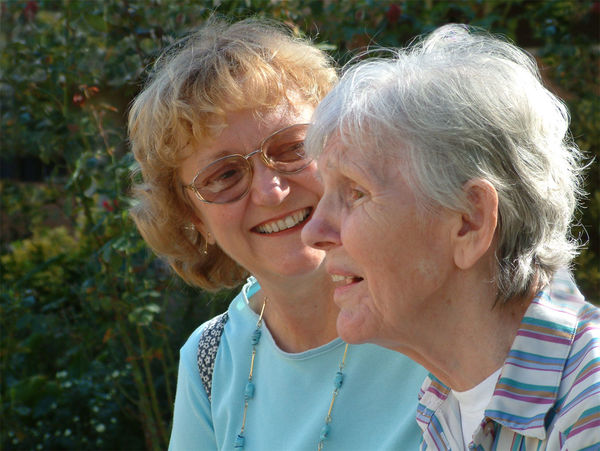
(Download)
#2 Decemember 2014. A request from mum for a christmas picture.
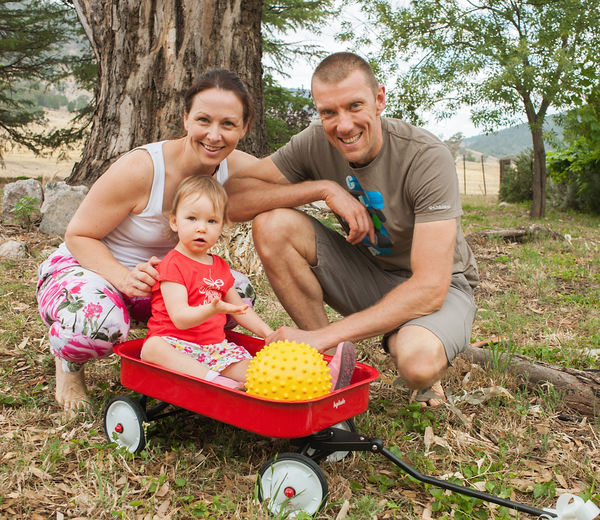
(Download)
Jun 2, 2020 22:45:39 #
minniev wrote:
I've always had a soft spot for Grant since I've spent much of my life sleeping in his bed: my grandfather bought it at auction in St. Louis during the depression.
Amazing! Thanks for sharing that.
Mike
Jun 3, 2020 15:08:07 #
RichardTaylor wrote:
1. What is your overall opinion of this image? The... (show quote)
Thanks Richard, for sharing your thoughts and your very charming portraits. I'm with you on the candids. I've never done any studio lighting, and seldom know where my flash is, so I'm pretty much committed to informal portraiture so far. I do admire a nice portrait but like lots of other things I admire, I don't feel like I have to do them myself.
Jun 28, 2020 03:21:55 #
Matthew Brady was an interesting case of a famous photographer who didn't take many of the photographs he's famous for. Many of the battlefield photographs, for example, were taken by his assistants Timothy O'Sullivan and Alexander Gardner. For one thing, Brady was uncomfortable around corpses. For another, Brady preferred "post processing" images using the pre-digital techniques of his day. As examples: (1) when a general failed to show up for a group photograph of Gen. William Sherman and his staff, Brady had him photographed the next day, and spliced his image into the ensemble, (2) when the faces of the House managers convened to impeach President Andrew Johnson looked too sour, Brady painted in a reassuringly genteel background.
The photo of Grant is credited by the Library of Congress and the National Portrait Gallery to Egbert Guy Fowx, who worked on contract for Brady. In the Spring of 1864, Brady petitioned the army to travel behind the lines, but received permission only after his wife asked Mrs. Grant for help. On June 19, Grant wrote home, reporting, "Brady is along with the Army and is taking a great many views and will send you a copy of each." While pursuing Gen. Grant for portraits, Brady was apparently using his knowledge of troop movements to speculate on Wall Street, sending coded messages through intermediaries in New York. One of Grant’s assistants got wind of the scheme, and asked Assistant Secretary of War Charles Dana to tell Grant “how he is being deceived by one to whom he has granted various privileges and favors.” But Grant remained a stalwart supporter of Brady. This foreshadowed the many scandals of Grant's presidency: Grant, honest himself, put his trust in subordinates who didn't deserve it.
As for me, I like taking photos of people, and would do more studio work if I had a studio or even had inexpensive access to one. Here's an example:
The photo of Grant is credited by the Library of Congress and the National Portrait Gallery to Egbert Guy Fowx, who worked on contract for Brady. In the Spring of 1864, Brady petitioned the army to travel behind the lines, but received permission only after his wife asked Mrs. Grant for help. On June 19, Grant wrote home, reporting, "Brady is along with the Army and is taking a great many views and will send you a copy of each." While pursuing Gen. Grant for portraits, Brady was apparently using his knowledge of troop movements to speculate on Wall Street, sending coded messages through intermediaries in New York. One of Grant’s assistants got wind of the scheme, and asked Assistant Secretary of War Charles Dana to tell Grant “how he is being deceived by one to whom he has granted various privileges and favors.” But Grant remained a stalwart supporter of Brady. This foreshadowed the many scandals of Grant's presidency: Grant, honest himself, put his trust in subordinates who didn't deserve it.
As for me, I like taking photos of people, and would do more studio work if I had a studio or even had inexpensive access to one. Here's an example:
Jun 28, 2020 10:51:11 #
jburlinson wrote:
Matthew Brady was an interesting case of a famous ... (show quote)
Thanks for sharing some fascinating information, and especially for sharing that nice portrait.
If you want to reply, then register here. Registration is free and your account is created instantly, so you can post right away.




